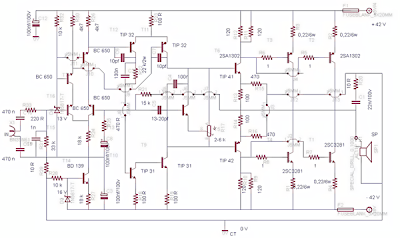Current generated flows through clips placed on the earlobes Output current adjustable from 80 to 600 microAmperes. Owing to the recent launching in Europe of Cranial Electrotherapy Stimulation (CES) portable sets, we have been "Electronically Stimulated" in designing a similar circuit for the sake of hobbyists. CES is the most popular technique for electrically boosting brain power, and has long been prescribed by doctors, mainly in the USA, for therapeutic reasons, including the treatment of anxiety, depression, insomnia, and chemical dependency. CES units generate an adjustable current (80 to 600 microAmperes) that flows through clips placed on the earlobes.
The waveform of this device is a 400 milliseconds positive pulse followed by a negative one of the same duration, then a pause of 1.2 seconds. The main frequency is 0.5 Hz, i.e. a double pulse every 2 seconds. Some people report that this kind of minute specialized electrical impulses contributes to achieve a relaxed state that leaves the mind alert. Obviously we cant claim or prove any therapeutic effectiveness for this device, but if you are interested in trying it, the circuit is so cheap and so simple to build that an attempt can be made with quite no harm.
Cranial Electrotherapy Stimulator Circuit diagram:
Parts:R1___________1M5 1/4W Resistor
R2___________15K 1/4W Resistor
R3___________100K Linear Potentiometer
R4___________2K2 1/4W Resistor
C1___________330nF 63V Polyester Capacitor
C2___________100µF 25V Electrolytic Capacitor
D1___________3mm. Red LED
IC1___________7555 or TS555CN CMos Timer IC
IC2___________4017 Decade counter with 10 decoded outputs IC
SW1__________SPST Slider Switch
B1____________9V PP3 Battery Clip for PP3 Battery
Two Earclips with wires (see notes)
Circuit operation:IC1 forms a narrow pulse, 2.5Hz oscillator feeding IC2. This chip generates the various timings for the output pulses. Output is taken at pins 2 & 3 to easily obtain negative going pulses also. Current output is limited to 600µA by R2 and can be regulated from 80 to 600µA by means of R3. The LED flashes every 2 seconds signaling proper operation and can also be used for setting purposes. It can be omitted together with R4, greatly increasing battery life.
Notes:- In order to obtain a more precise frequency setting take R1=1M2 and add a 500K trimmer in series with it.
- In this case use a frequency meter to read 2.5Hz at pin 3 of IC1, or an oscilloscope to read 400msec pulses at pins 2, 3 or 10, adjusting the added trimmer.
- A simpler setting can be made adjusting the trimmer to count exactly a LED flash every 2 seconds.
- Earclips can be made with little plastic clips and cementing the end of the wire in a position suited to make good contact with earlobes.
- Ultra-simple earclips can be made using a thin copper foil with rounded corners 4 cm. long and 1.5 cm. wide, soldering the wire end in the center, and then folding the foil in two parts holding the earlobes.
- To ensure a better current transfer, this kind of devices usually has felt pads moistened with a conducting solution interposed between clips and skin.
- Commercial sets have frequently a built-in timer. Timing sessions last usually 20 minutes to 1 hour. For this purpose you can use the Timed Beeper the Bedside Lamp Timer or the Jogging Timer circuits available on this website, adjusting the timing components in order to suit your needs.








